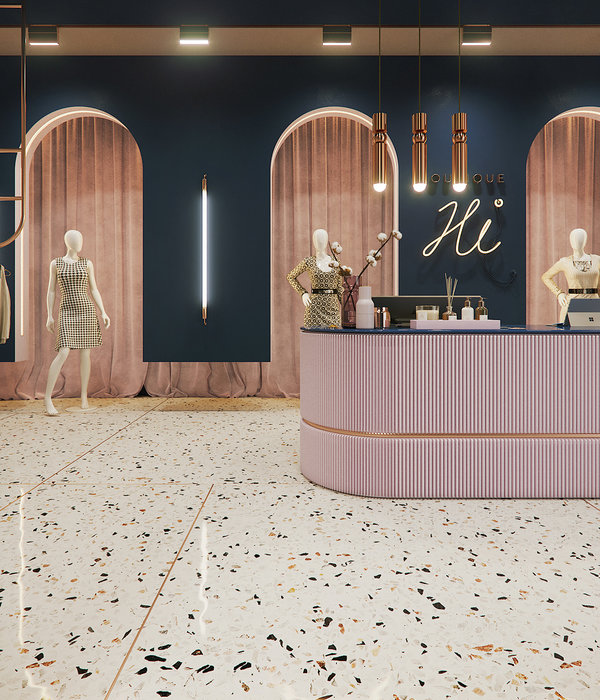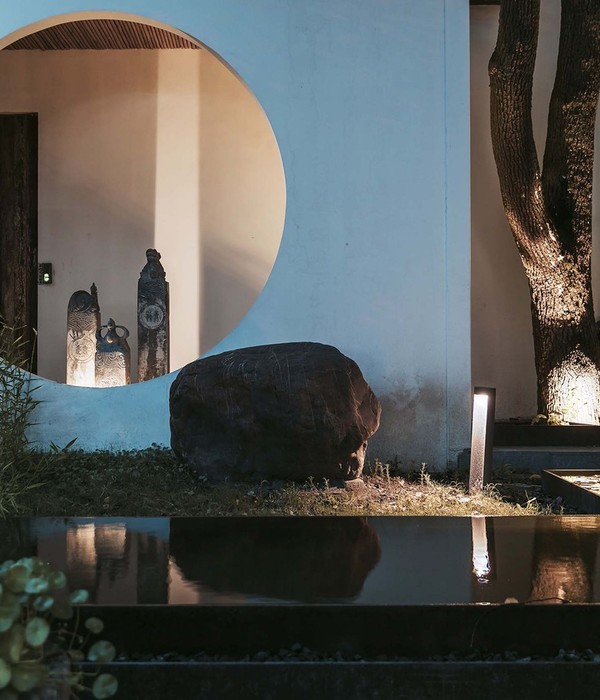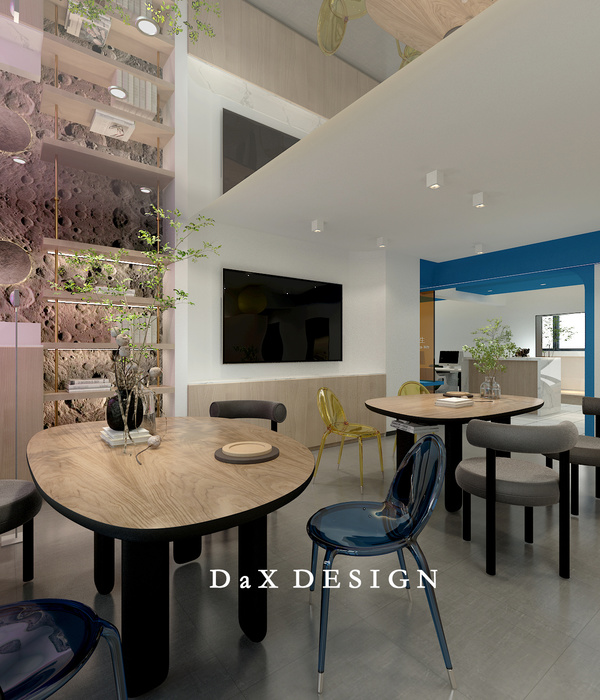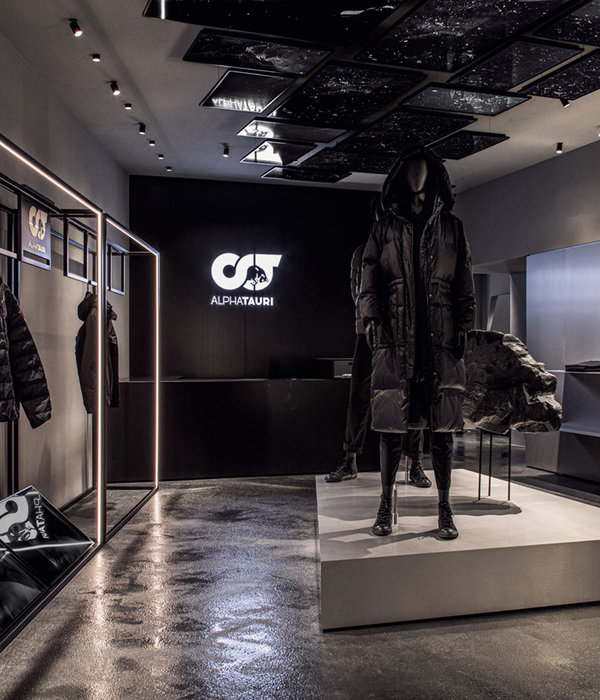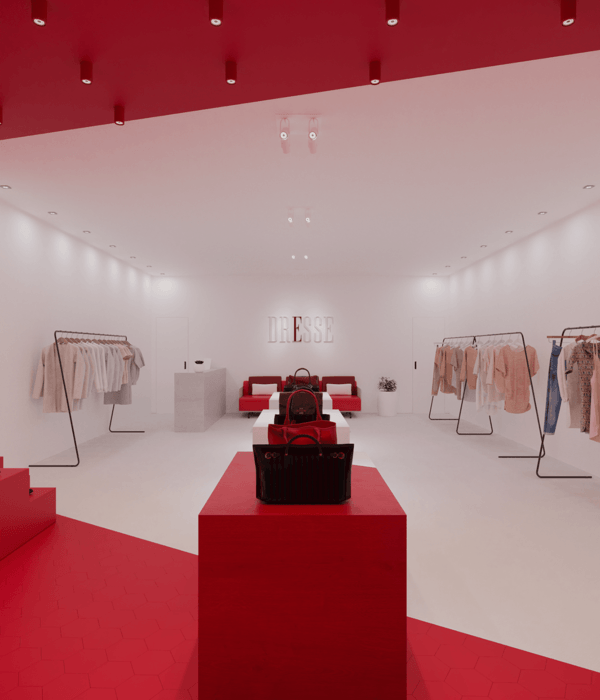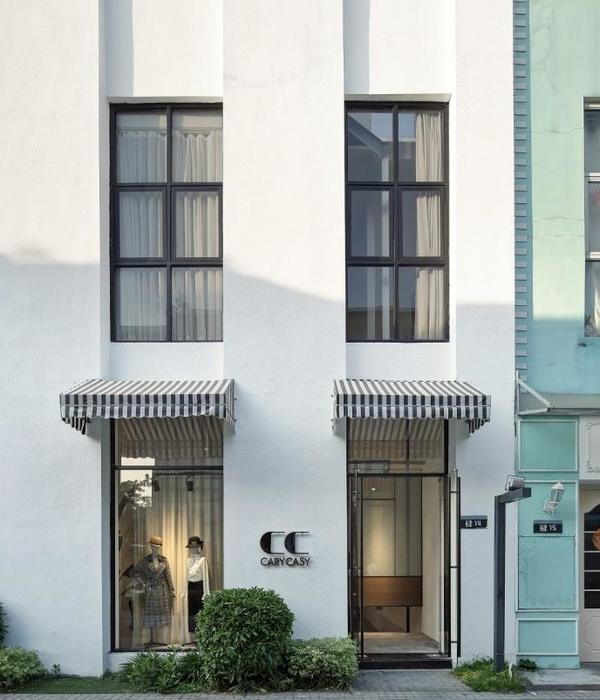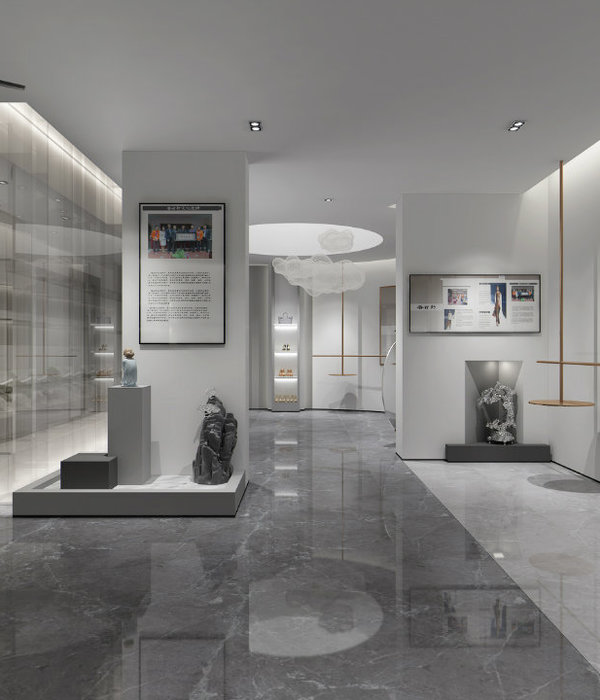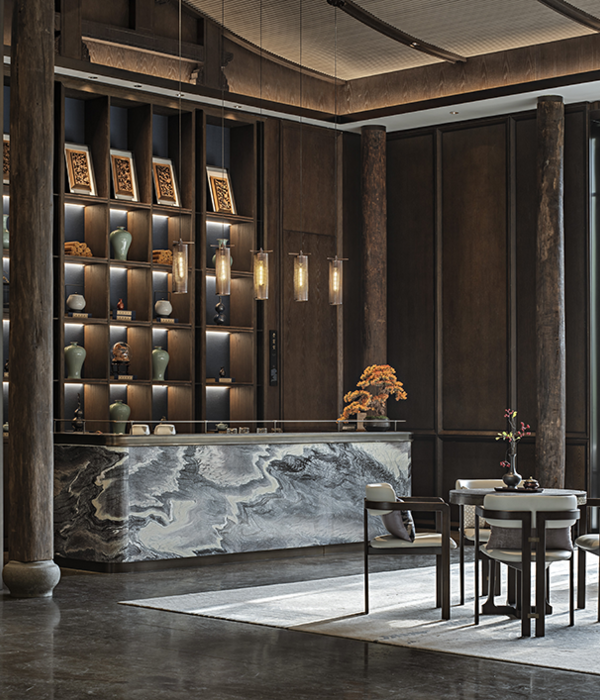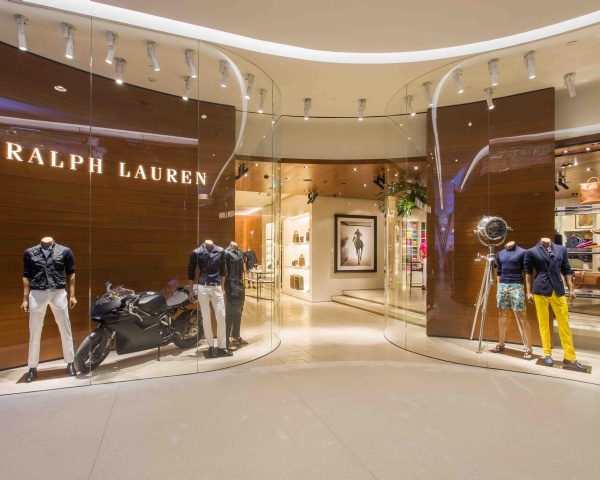ENSHADOWER隐蔽者®创始于2012年,是国内最早从固齿自行车运动获取灵感的功能性服装品牌,say architects受其委托设计位于杭州南宋御街的第一家线下门店。回顾过去十年,恰好是品牌与这座城市共同发展的黄金十年,say借用城市建设中所用到的工业材料,让品牌、城市、古建筑展开跨越时间的对话。
Established in 2012, ENSHADOWER® is a functional clothing brand that acquired inspiration from fixed-gear bicycle sport at the earliest time in the domestic, say architects was commissioned to design the first offline store located in Nanyu street of Hangzhou. Review the past decade, a developing golden era for both the brand and Hangzhou City. say introduced the industrial materials used in the city’s construction and starts a conversation across time between the brand and the site.
▼街道视角,view from street ©汪敏杰
隐蔽者创立初期,专注于固齿自行车运动的骑行服饰。而固定齿轮自行车,是一种没有单向自由轮的自行车,车轮与脚踏板永远处于联动状态,早期多为城市邮差工作所用,后期发展为年轻人的潮流运动,受此启发,概念围绕城市骑行所展开。say从城市肌理中选取了一些常见却记不住的建筑材料,包含了混凝土、U型玻璃、透明玻璃、穿孔铝板、菱形铝网等材料,根据内部功能对光线的需求,拼凑出了一个有趣的立面。
▼立面分解图,facade diagram ©SAY ARCHITECTS
At the initial establishment of ENSHADOWER, it focused on riding costumes of fixed-gear bicycle sport. The fixed-gear bicycle has single direction pedal, wheels and pedals are always in a fixed state, mail carriers of the city used them for delivering in the old days. Afterwards, it developed into a fashionable sport for young people. say started the concept of cycling around the city. Say selected some common but not memorable building materials from the city texture, including concrete, channel glass, perforated aluminium plate, rhombus aluminium net etc., and collaged them together into an attractive facade.
▼室内空间概览,overview of the interior space ©汪敏杰
▼展示区,display area ©汪敏杰
建筑主体总共两层,一层由咖啡、服装陈列两部分组成,二层为多功能策展空间以应对品牌对于线下店的使用需求,外立面根据透光率对应着每一个功能体块。
The prominent architecture is a two-floor building. The first floor is for coffee and clothing exhibition, and the second floor is a multi-functional exhibition space to cope with the demand of the brand to use the offline store. The facades correspond to each functional program with light transmittance.
▼服装陈列展架,exhibition furnitures ©汪敏杰
一层空间去掉了原有的轻质隔断墙体,保留了原建筑的木质结构,并重新打磨上漆。传统的古建老宅大多依靠门窗的单侧自然采光,让空间呈现质感之美,say在梁位之间用36块蜂窝铝板作为吊顶,灯光、消防和暖通设备都藏于通透的吊顶之上,光线经过漫反射均匀的平铺在展厅中,在现代和传统寻求一种平衡。
say kept the wooden structure of the original architecture, which was re-polished and painted. The single direction natural lighting reveals the beauty of texture. say used 36 aluminium honeycomb plates as suspended ceiling between the beam positions. The light, firefighting, and HVAC equipment hide above the transparent suspended ceiling. The light evenly spreads in the exhibition hall through diffuse reflection. It seeks a kind of balance between modern and tradition.
▼漫反射的光线,the evenly spreading light ©汪敏杰
一辆固齿自行车只有19个通用零件,每一个模块化的零件有着极强的兼容性,大大增加了改装的可玩性,而品牌在服装上的设计细节无一不体现着对于功能性的追求。say借此为品牌量身打造了一套陈列系统“拾贰”,根据产品性质涵盖悬挂、置物、展示、灯光等功能。系统仅仅由12个开模零件组成,相互组合可以形成上万种变化的展陈方式,部分零件同时也作为咖啡吧台的悬挑臂使用。
▼展架结构,structure diagram ©SAY ARCHITECTS
A fixed-gear bicycle has 19 parts joint. Each modularized part has powerful compatibility, which significantly increases the possibility of refit, while the designed details of the brand on the costume all manifest its seeking of functionality. say customized a set of exhibit system “twelve” for the brand, which covers functions of suspending, object placement, exhibition, lamplight etc., based on the property of the product. The system is just composed of 12 mould available parts. Their intercombination could form tens of thousands of variable exhibition ways. Some parts could also be used as a cantilever arm of the cafe bar at the same time.
▼细部,details ©汪敏杰
二层作为复合型空间,最大程度的保留了原有的结构,开放形成一个小型广场,藏匿于木结构中的射灯模组也能够应对不同使用的需求。底部是由工业铝型材组成的模块化展柜,外侧作为暗藏灯带的功能性陈列柜,内侧围合成仓储空间。现代化进程的材料与老建筑形成一种彼此共生的关系。
say kept the original structure as much as possible. It is open, and like a mini-square, the spotlight module group hidden in the wooden frame could also cope with different activities. The bottom is a modularized display case composed of an industrial aluminium profile. The outer side serves as a functional display case for hidden light belts while the inner side encloses into a storage space. Modernization process materials formed a mutual symbiotic relationship with the old building.
▼经过空间底部木结构楼梯,通往二层的策展空间 the wood stair leading towards the 2nd floor exhibition space ©汪敏杰
▼楼梯下侧的空间被用作试衣间 the space under the stairs is used as fitting room ©汪敏杰
▼二层窗边休息区,rest area on the second floor ©汪敏杰
南宋御街自古是杭城主干道,伴随历史迁移,沿街的建筑立面映射了近百年的文化演变。say希望通过融洽、有限、叙事的改造,重新焕发御街南段的商业形态,也为周边居民带来更为有机的生活环境。
The Southern Song Imperial Street has always been a crucial commercial street for Hangzhou, the facade of buildings along the streets reflects the evolution of cultural over centries. say want to refresh the commercial atomosphere of the street with a touch of story-telling.
▼二层多功能策展空间,multi-functional exhibition space on the second floor ©汪敏杰
▼夜景,night view ©汪敏杰
▼首层平面,the first floor plan ©SAY ARCHITECTS
▼二层平面,the second floor plan ©SAY ARCHITECTS
▼项目更多图片
{{item.text_origin}}

